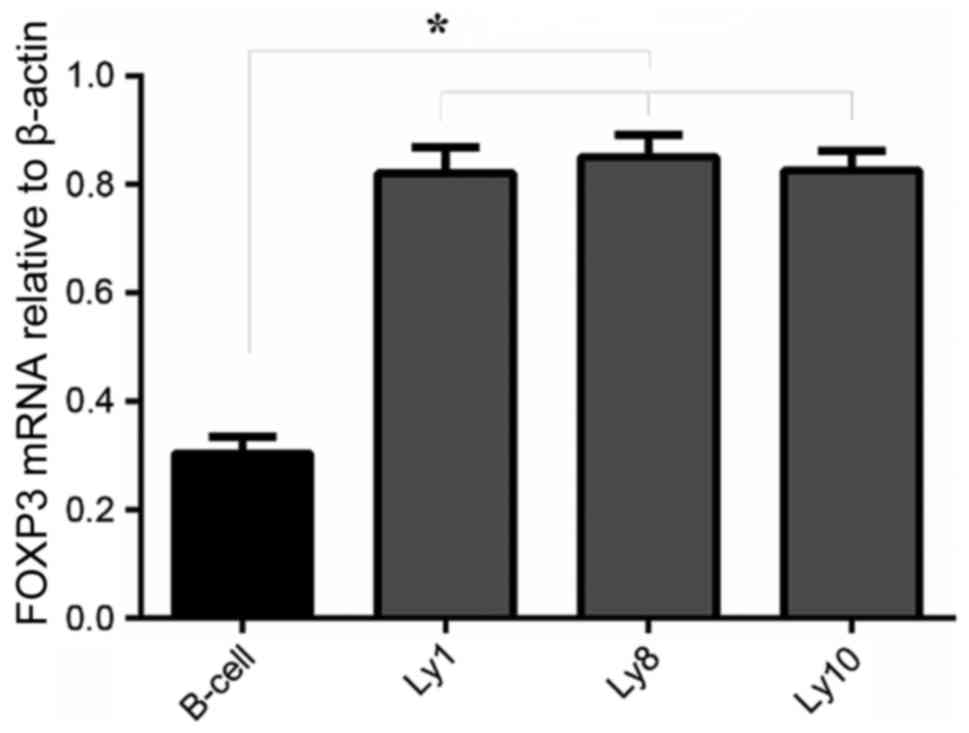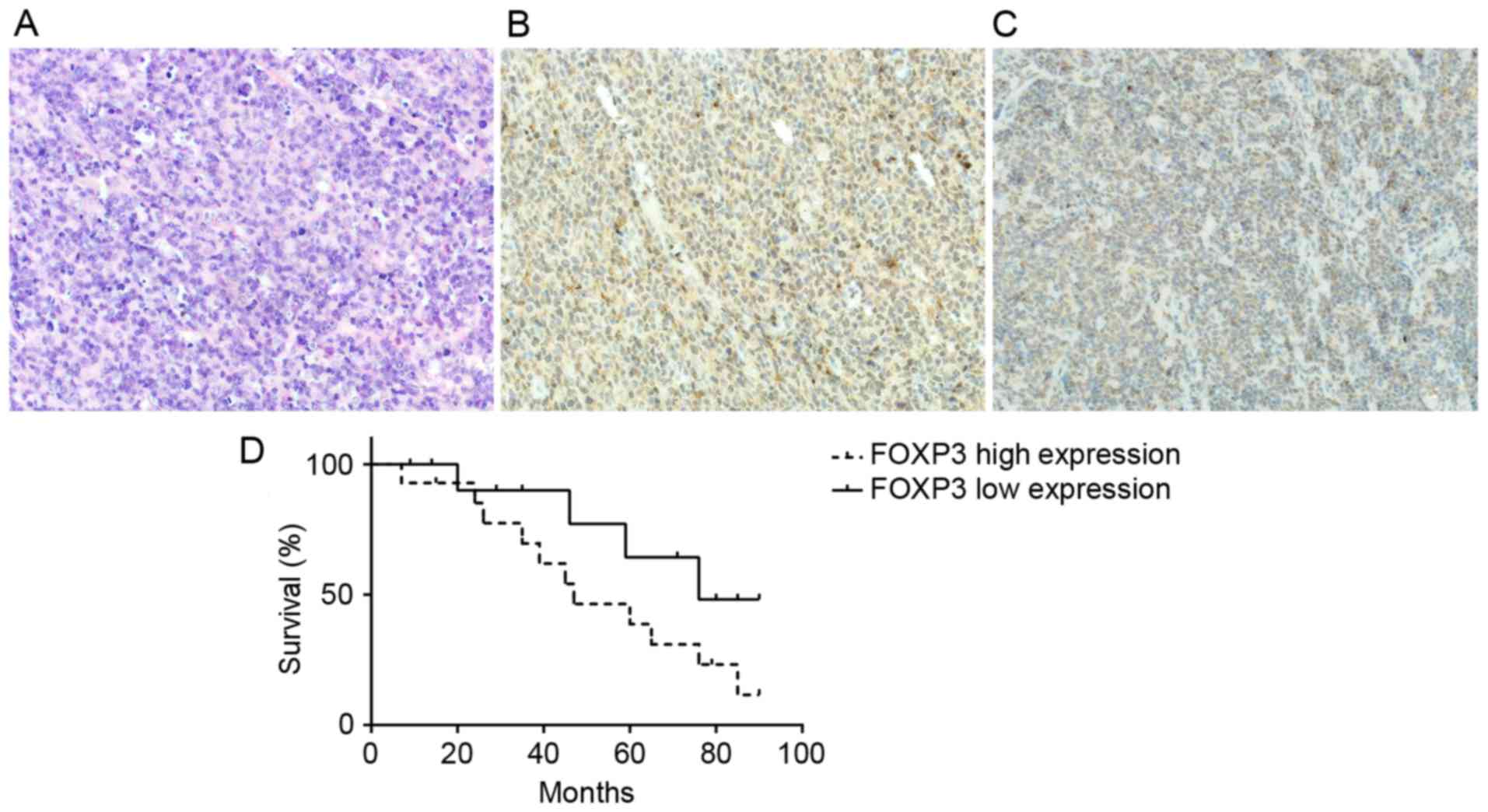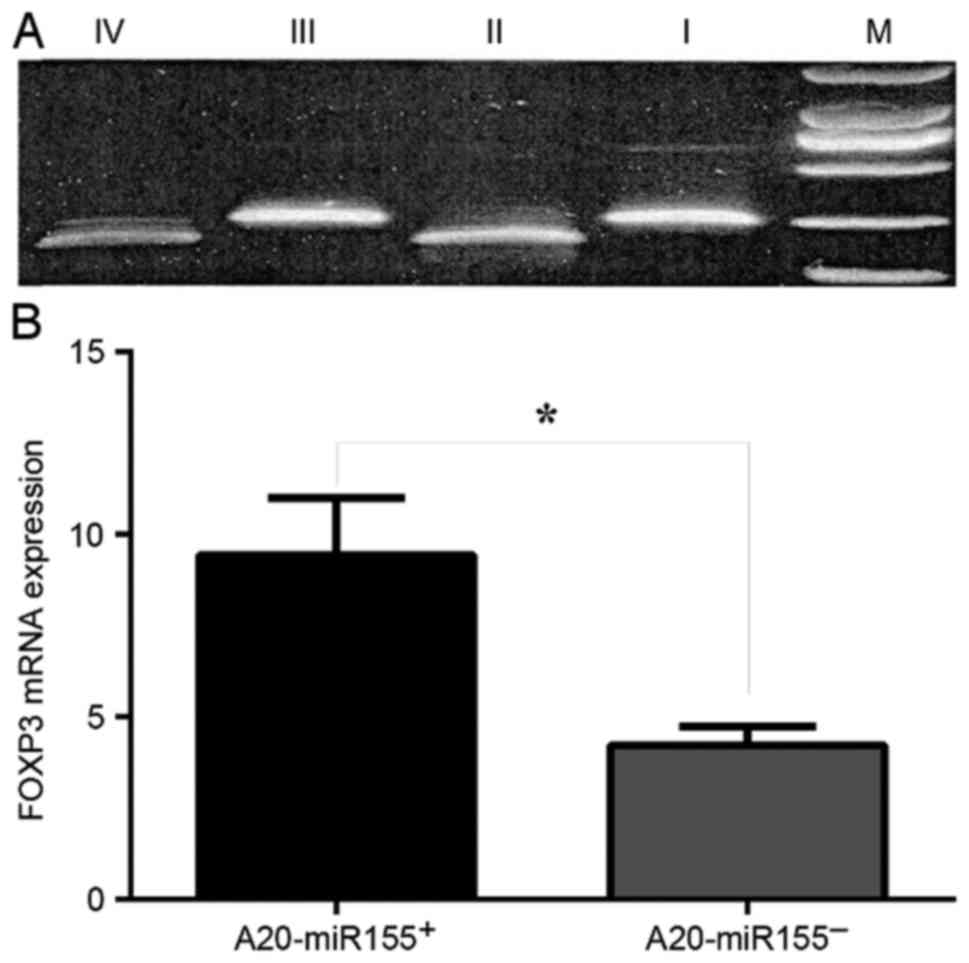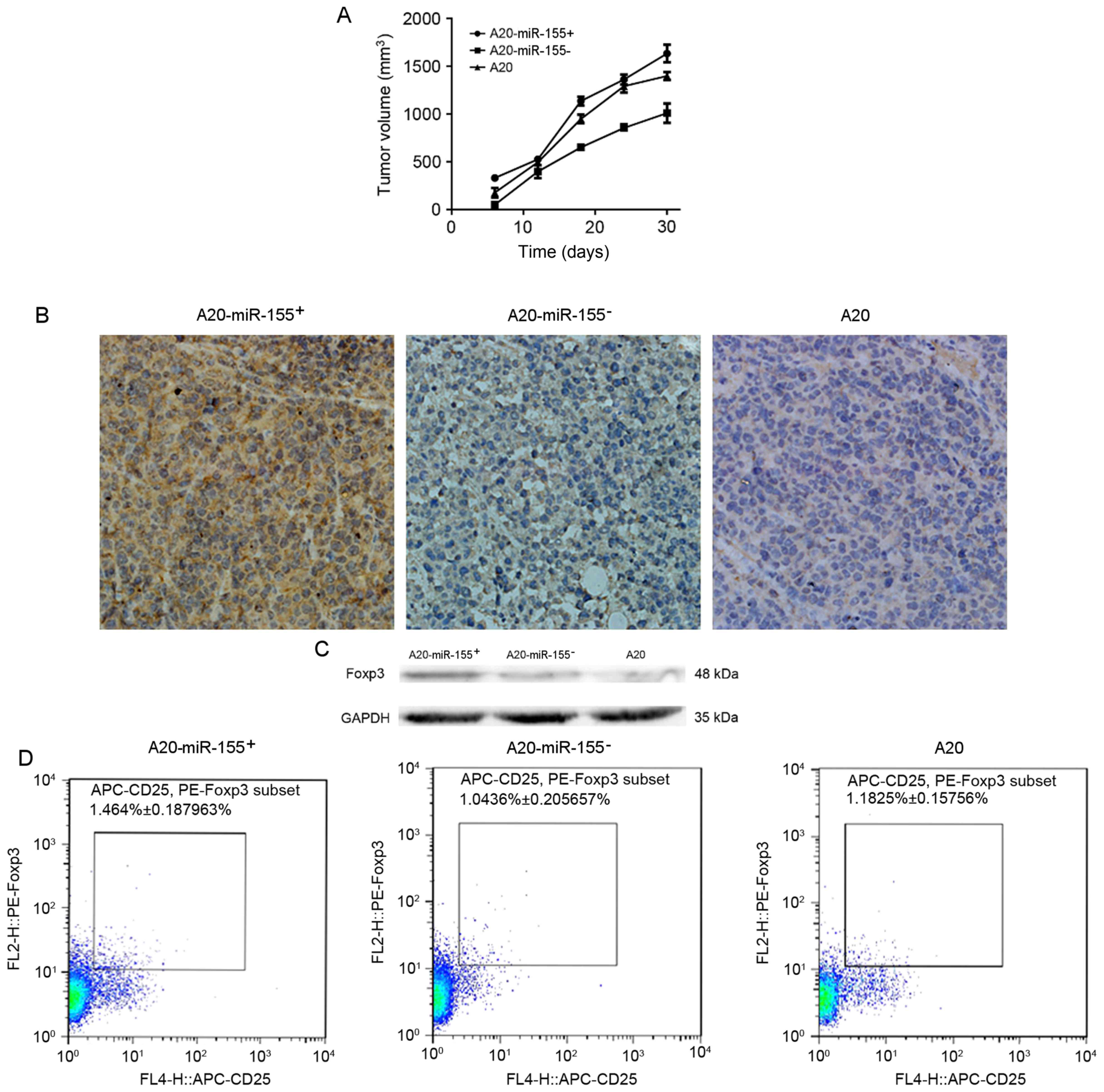|
1
|
Cultrera JL and Dalia SM: Diffuse large
B-cell lymphoma: Current strategies and future directions. Cancer
Control. 19:204–213. 2012.PubMed/NCBI
|
|
2
|
Campbell DJ and Ziegler SF: FOXP3 modifies
the phenotypic and functional properties of regulatory T cells. Nat
Rev Immunol. 7:305–310. 2007. View
Article : Google Scholar : PubMed/NCBI
|
|
3
|
Xu CT, Li WM and Yao YM: Regulating
mechanism of regulatory T cells in immunoregulatory responses. Int
J Pathol Clin Med. 28:0199–0106. 2008.
|
|
4
|
Schwartz RH: Natural regulatory T cells
and self-tolerance. Nat Immunol. 6:327–330. 2005. View Article : Google Scholar : PubMed/NCBI
|
|
5
|
Curiel TJ: Tregs and rethinking cancer
immunotherapy. J Clin Invest. 117:1167–1174. 2007. View Article : Google Scholar : PubMed/NCBI
|
|
6
|
Sakaguchi S, Miyara M, Costantino CM and
Hafler DA: FOXP3+ regulatory T cells in the human immune system.
Nat Rev Immunol. 10:490–500. 2010. View
Article : Google Scholar : PubMed/NCBI
|
|
7
|
Kryczek I, Liu R, Wang G, Wu K, Shu X,
Szeliga W, Vatan L, Finlayson E, Huang E, Simeone D, et al: FOXP3
defines regulatory T cells in human tumor and autoimmune disease.
Cancer Res. 69:3995–4000. 2009. View Article : Google Scholar : PubMed/NCBI
|
|
8
|
Fontenot JD, Rasmussen JP, Williams LM,
Dooley JL, Farr AG and Rudensky AY: Regulatory T cell lineage
specification by the forkhead transcription factor foxp3. Immunity.
22:329–341. 2005. View Article : Google Scholar : PubMed/NCBI
|
|
9
|
Karanikas V, Speletas M, Zamanakou M,
Kalala F, Loules G, Kerenidi T, Barda AK, Gourgoulianis KI and
Germenis AE: FOXP3 expression in human cancer cells. J Transl Med.
6:192008. View Article : Google Scholar : PubMed/NCBI
|
|
10
|
Generali D, Bates G, Berruti A, Brizzi MP,
Campo L, Bonardi S, Bersiga A, Allevi G, Milani M, Aguggini S, et
al: Immunomodulation of FOXP3+ regulatory T cells by the aromatase
inhibitor letrozole in breast cancer patients. Clin Cancer Res.
15:1046–1051. 2009. View Article : Google Scholar : PubMed/NCBI
|
|
11
|
Tzankov A, Meier C, Hirschmann P, Went P,
Pileri SA and Dirnhofer S: Correlation of high numbers of
intratumoral FOXP3+ regulatory T cells with improved survival in
germinal center-like diffuse large B-cell lymphoma, follicular
lymphoma and classical Hodgkin's lymphoma. Haematologica.
93:193–200. 2008. View Article : Google Scholar : PubMed/NCBI
|
|
12
|
Calin GA and Croce CM: MicroRNA signatures
in human cancers. Nat Rev Cancer. 6:857–866. 2006. View Article : Google Scholar : PubMed/NCBI
|
|
13
|
Cobb BS, Hertweck A, Smith J, O'Connor E,
Graf D, Cook T, Smale ST, Sakaguchi S, Livesey FJ, Fisher AG and
Merkenschlager M: A role for Dicer in immune regulation. J Exp Med.
203:2519–2527. 2006. View Article : Google Scholar : PubMed/NCBI
|
|
14
|
Seo KH, Zhou L, Meng D, Xu J, Dong Z and
Mi QS: Loss of microRNAs in thymus perturbs invariant NKT cell
development and function. Cell Mol Immunol. 7:447–453. 2010.
View Article : Google Scholar : PubMed/NCBI
|
|
15
|
Sadlon TJ, Wilkinson BG, Pederson S, Brown
CY, Bresatz S, Gargett T, Melville EL, Peng K, D'Andrea RJ, Glonek
GG, et al: Genome-wide identification of human FOXP3 target genes
in natural regulatory T cells. J Immunol. 185:1071–1081. 2010.
View Article : Google Scholar : PubMed/NCBI
|
|
16
|
Yamamoto M, Kondo E, Takeuchi M, Harashima
A, Otani T, Tsuji-Takayama K, Yamasaki F, Kumon H, Kibata M and
Nakamura S: miR-155, a modulator of FOXO3a protein expression, is
underexpressed and cannot be upregulated by stimulation of HOZOT, a
line of multifunctional Treg. PLoS One. 6:e168412011. View Article : Google Scholar : PubMed/NCBI
|
|
17
|
National Research Council, . Guide for the
Care and Use of Laboratory Animals. National Academies Press;
Washington, DC: pp. 41–48. 1974
|
|
18
|
Mestdagh P, Van Vlierberghe P, De Weer A,
Muth D, Westermann F, Speleman F and Vandesompele J: A novel and
universal method for microRNA RT-qPCR data normalization. Genome
Biol. 10:R642009. View Article : Google Scholar : PubMed/NCBI
|
|
19
|
Kraan MC, Smith MD, Weedon H, Ahern MJ,
Breedveld FC and Tak PP: Measurement of cytokine and adhesion
molecule expression in synovial tissue by digital image analysis.
Ann Rheum Dis. 60:296–298. 2001. View Article : Google Scholar : PubMed/NCBI
|
|
20
|
Shiozawa E, Yamochi-Onizuka T, Takimoto M
and Ota H: The GCB subtype of diffuse large B-cell lymphoma is less
frequent in Asian countries. Leuk Res. 31:1579–1583. 2007.
View Article : Google Scholar : PubMed/NCBI
|
|
21
|
Oki Y, Yamamoto K, Kato H, Kuwatsuka Y,
Taji H, Kagami Y and Morishima Y: Low absolute lymphocyte count is
a poor prognostic marker in patients with diffuse large B-cell
lymphoma and suggests patients' survival benefit from rituximab.
Eur J Haematol. 81:448–453. 2008. View Article : Google Scholar : PubMed/NCBI
|
|
22
|
Jabłońska J, Jesionek-Kupnicka D, Potemski
P, Kowalik A, Sygut J and Kordek R: Comparison of two different
immunohistochemical algorithms identifying prognostic subgroups of
DLBCL. Pol J Pathol. 61:124–132. 2010.PubMed/NCBI
|
|
23
|
Qian BZ and Pollard JW: Macrophage
diversity enhances tumor progression and metastasis. Cell.
141:39–51. 2010. View Article : Google Scholar : PubMed/NCBI
|
|
24
|
Kono K, Kawaida H, Takahashi A, Sugai H,
Mimura K, Miyagawa N, Omata H and Fujii H: CD4(+)CD25high
regulatory T cells increase with tumor stage in patients with
gastric and esophageal cancers. Cancer Immunol Immunother.
55:1064–1071. 2006. View Article : Google Scholar : PubMed/NCBI
|
|
25
|
Badoual C, Hans S, Rodriguez J, Peyrard S,
Klein C, Nel H Agueznay, Mosseri V, Laccourreye O, Bruneval P,
Fridman WH, et al: Prognostic value of tumor-infiltrating CD4+
T-cell subpopulations in head and neck cancers. Clin Cancer Res.
12:465–472. 2006. View Article : Google Scholar : PubMed/NCBI
|
|
26
|
Salama P, Phillips M, Grieu F, Morris M,
Zeps N, Joseph D, Platell C and Iacopetta B: Tumor-infiltrating
FOXP3+ T regulatory cells show strong prognostic significance in
colorectal cancer. J Clin Oncol. 27:186–192. 2009. View Article : Google Scholar : PubMed/NCBI
|
|
27
|
Khattri R, Cox T, Yasayko SA and Ramsdell
F: An essential role for Scurfin in CD4+CD25+ T regulatory cells.
Nat Immunol. 4:337–342. 2003. View
Article : Google Scholar : PubMed/NCBI
|
|
28
|
Rai D, Karanti S, Jung I, Dahia PL and
Aguiar RC: Coordinated expression of microRNA-155 and predicted
target genes in diffuse large B-cell lymphoma. Cancer Genet
Cytogenet. 181:8–15. 2008. View Article : Google Scholar : PubMed/NCBI
|
|
29
|
Eis PS, Tam W, Sun L, Chadburn A, Li Z,
Gomez MF, Lund E and Dahlberg JE: Accumulation of miR-155 and BIC
RNA in human B cell lymphomas. Proc Natl Acad Sci USA. 102:pp.
3627–3632. 2005; View Article : Google Scholar : PubMed/NCBI
|
|
30
|
Kohlhaas S, Garden OA, Scudamore C, Turner
M, Okkenhaug K and Vigorito E: Cutting edge: The Foxp3 target
miR-155 contributes to the development of regulatory T cells. J
Immunol. 182:2578–2582. 2009. View Article : Google Scholar : PubMed/NCBI
|
|
31
|
Bayer AL, Yu A and Malek TR: Function of
the IL-2R for thymic and peripheral CD4+CD25+Foxp3+ T regulatory
cells. J Immunol. 178:4062–4071. 2007. View Article : Google Scholar : PubMed/NCBI
|
|
32
|
Lu LF, Thai TH, Calado DP, Chaudhry A,
Kubo M, Tanaka K, Loeb GB, Lee H, Yoshimura A, Rajewsky K and
Rudensky AY: Foxp3-dependent microR-NA155 confers competitive
fitness to regulatory T cells by targeting SOCS1. Immunity.
30:80–91. 2009. View Article : Google Scholar : PubMed/NCBI
|
|
33
|
Yao R, Ma YL, Liang W, Li HH, Ma ZJ, Yu X
and Liao YH: MicroRNA-155 modulates Treg and Th17 cells
differentiation and Th17 cell function by targeting SOCS1. PLoS
One. 7:e460822012. View Article : Google Scholar : PubMed/NCBI
|


















